1000/1000
Hot
Most Recent

There is increasing focus on the difficult challenge of realizing coordinated development of production, living and ecological spaces within the regional development process. An ecological–production–living space (EPLSs)evaluation index system was established in this study based on the concept of EPLSs and the relationship between land use function, land use type and the national standard of land use classification, to reveal the driving forces and patterns of variation in EPLSs in Inner Mongolia.
Figure 1 shows the spatial distribution of ecological, living and production spaces of Inner Mongolia for six different periods from 1990 to 2015. Grassland is the dominant land use type in Inner Mongolia due to the prevailing climate, topography and other natural conditions. The proportions of production, ecological and living spaces in Inner Mongolia in 2015 were approximately 10.18%, 88.79% and 1.03%, respectively and ecological space was the priority. The ecological space of Inner Mongolia is mainly distributed in the grassland and hilly areas to the north of the Greater Hinggan–Yinshan–Helan mountains, with a spatial distribution roughly inverse to that of living and production spaces. The production space of Inner Mongolia is mainly distributed to the south of the Greater Hinggan–Yinshan–Helan mountains, with that of the Hulunbeier Caoyuan and Alxa Desert area being relatively small and basically consistent with the boundary zone of animal husbandry and agriculture in Inner Mongolia. The main reason for the relatively small production space in Inner Mongolia is due to its location to the north of the three mountains in an area in which soil, precipitation and temperature conditions are not suitable for large-scale production activities. The living spaces of the Hubaoe urban agglomeration in the central part of the Inner Mongolia, Chifeng and Tongliao areas in the east are relatively concentrated.
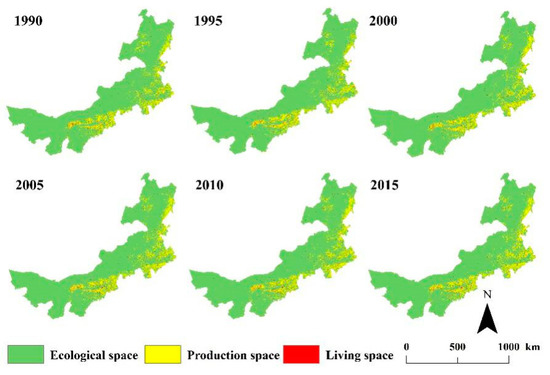
Figure 1. Spatial distributions of production, living and ecological spaces in Inner Mongolia from 1990 to 2015.
Figure 2 shows the changes in coverage of production, living and ecological spaces in Inner Mongolia from 1990 to 2015. It is evident that there was a dramatic decline in ecological spaces in Inner Mongolia from 103.14 × 104 km2 in 1990 to 101.74 × 104 km2 in 2015, declining by 1.36% over the study period, whereas living and production spaces increased by 12.27% and 12.59% over the study period, respectively.
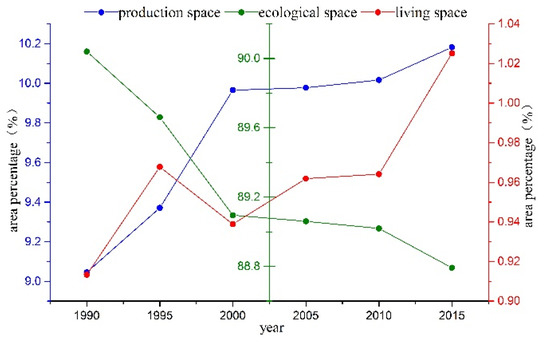
Figure 2. Percentage changes to the areas of production, living and ecological spaces in Inner Mongolia from 1990 to 2015.
Figure 3 shows the spatial changes in EPLS for the 12 leagues of Inner Mongolia over the period 1990 to 2015, in which there are obvious regional differences. Among the 12 league cities in Inner Mongolia, only Ulanqab and Bayannur showed increases to the extent of ecological space, whereas decreasing trends were evident in the remainder. Among them, the cities of Chifeng and Hulunbeier showed the largest declines, reaching 6636 and 6436 km2, respectively. Hohhot, Ordos and Ulanqab showed the greatest increases in ecological space at 672, 531 and 474 km2, respectively, whereas the city of Wuhai had the smallest increase at 96 km2. Production space in Bayannur and Ulanqab decreased by 400 and 383 km2 respectively, whereas increases were evident in the city of Hulunbeier, the league of Hinggan and the cities of Tongliao and Chifeng of 3297, 2247, 2766 and 3297 km2, respectively. In general, living spaces in the central and western regions increased, ecological spaces decreased and production spaces in the eastern region increased.
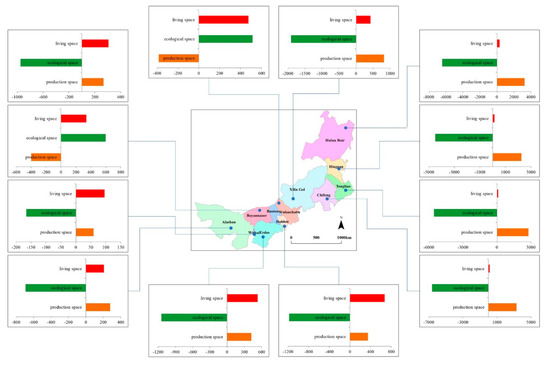
Figure 3. Spatial changes to ecological, production and living spaces (EPLSs) in Inner Mongolia from 1990 to 2015. The unit in the bar charts is km2.
The center-of-gravity transfer trajectory of EPLS in Inner Mongolia from 1990 to 2015 was calculated using the center transfer formula, with the results shown in Figure 4. It is evident that the center of gravity of EPLS in Inner Mongolia changed from 1990 to 2015. The center of gravity of living space showed the greatest migration, whereas that of production space showed the smallest. The trajectory of the center of gravity of ecological space in Inner Mongolia showed an “S” shape from 1990 to 2015, and the center of gravity of ecological space moved 104.228 km to the southwest, with the migration not obvious from 1990 to 2010, but accelerating subsequently. Over the same period, the center of gravity of production space in Inner Mongolia moved 52.932 km to the northeast, whereas that of living space moved 190.509 km to the southwest.

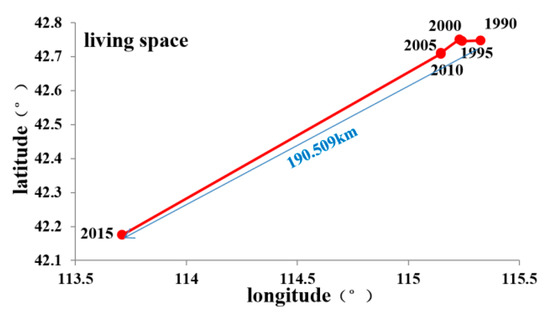
Figure 4. Migrations of production, living and ecological space in Inner Mongolia from 1990 to 2015 as calculated using the Barycenter migration model. Blue arrows indicate the moving distances.
Figure 5 shows that the interaction between ecological space and production space was the most obvious, with a clear, consistent relationship between ecological space and production space, which was concentrated in the cities of Hulunbuir and Chifeng, indicating poor stability of ecological and living spaces in this region. In general, changes to EPLS in Inner Mongolia from 1990 to 2015 were mainly concentrated in the area south of the Xingan Ling–Yinshan–Helan mountains, where the main production mode was agriculture. In other words, the relative stability of the EPLS area was consistent with that of areas in which animal husbandry is practiced. There were obvious impacts of agricultural-based production methods on changes to EPLS.
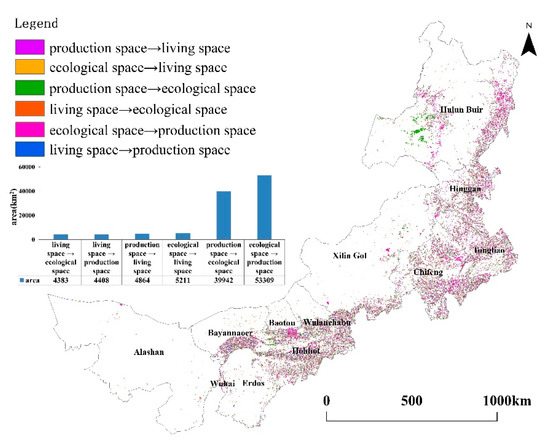
Figure 5. Transformation in ecological, production and living spaces (EPLSs) in Inner Mongolia from 1990 to 2015.
Several features were noted within the spatial patterns of EPLS in Inner Mongolia. The changes in EPLS indicate that there have been rapid increases in production and living spaces, whereas ecological spaces have continuously decreased. Within structural EPLS change, living spaces have always been focused within towns, with a strong path dependence characteristic, whereas production spaces are mainly distributed bordering living spaces, and even appear to be an expansion of the “enclave”-type space in which living and production spaces are nested and distributed within an ecological space, with the ecological space constantly fragmented by living and production spaces, and the degree of fragmentation becoming increasingly severe.